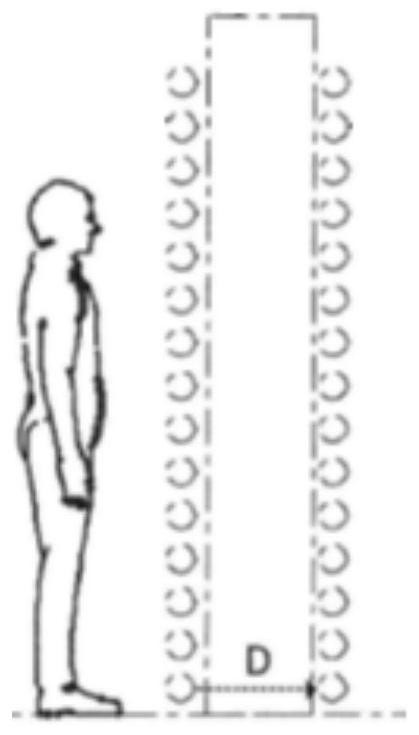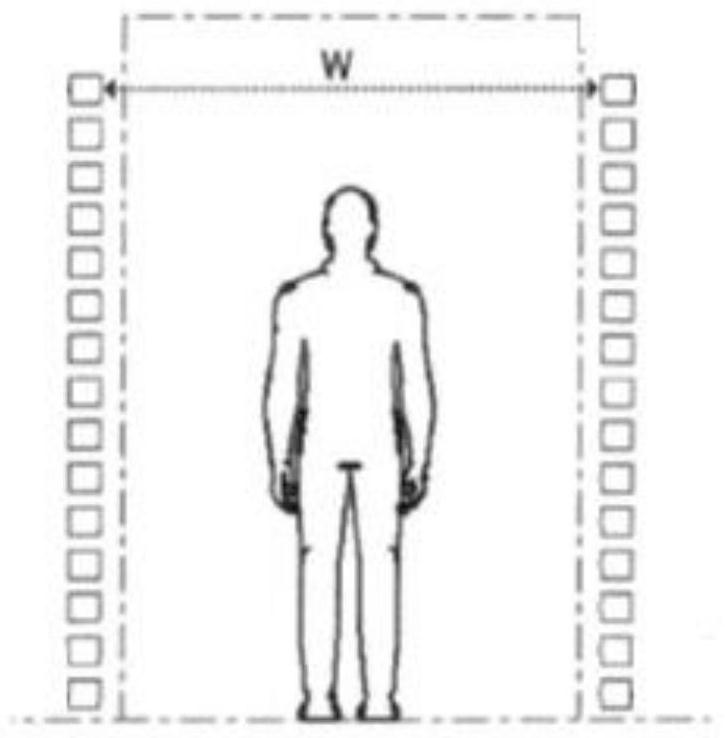Elevator detection device
A detection device and elevator technology, applied in measurement devices, optical devices, transportation and packaging, etc., can solve the problems of high cost, high space requirements, complex installation, etc., achieve low layout and installation requirements, reduce complexity, reduce cost effect
- Summary
- Abstract
- Description
- Claims
- Application Information
AI Technical Summary
Problems solved by technology
Method used
Image
Examples
Embodiment 1
[0062] The elevator detection device of the present embodiment, such as figure 2 shown, including:
[0063] A sensor group for detecting people and / or objects passing through the entrance and exit of the elevator car, the sensor group includes at least one sensor;
[0064] A judging unit, judging whether people and / or objects pass through the entrance and exit of the elevator car according to the detection signal output by the sensor group;
[0065] The sensor group is installed on the mounting seat on the upper part of the elevator car entrance, and the mounting seat is located on the elevator car box. The sensor group on the mounting seat is distributed along the width direction of the car door and arranged from top to bottom. The following methods are used to detect people and / or objects passing through the entrance and exit of the elevator car;
[0066] The detection area of the sensor group includes the area where the elevator car door is located, and the ratio α of ...
Embodiment 2
[0071] On the basis of Embodiment 1, the elevator detection device of this embodiment is as follows: Figure 4 shown, including:
[0072] A sensor group is used to detect people and / or objects passing through the entrance and exit of the elevator car, the sensor group includes at least one sensor and the number γ of the sensor group satisfies: γ≥2;
[0073] A judging unit, judging whether people and / or objects pass through the entrance and exit of the elevator car according to the detection signal output by the sensor group;
[0074] The first calculation unit, when the judging unit determines that people and / or objects pass through the entrance and exit of the elevator car, calculate the occupied area of the people and / or objects in the elevator car according to the detection signal output by the sensor group;
[0075] The sensor group is installed on the mounting seat on the upper part of the elevator car entrance, and the mounting seat is located on the elevator car box....
Embodiment 3
[0098] On the basis of embodiment two, the elevator detection device of the present embodiment, such as Figure 6 , Figure 7 , Figure 8 As shown, it also includes a second computing unit and / or a car occupancy computing module, wherein:
[0099] The second calculation unit is used to calculate the current unoccupied area of the elevator car according to the occupied area of people and / or objects in the elevator car output by the first calculation unit and the floor area of the elevator car;
[0100] A car occupancy rate calculation module, which calculates the car occupancy rate according to the floor area of the elevator car and the projected area output by the projected area calculation module.
PUM
 Login to View More
Login to View More Abstract
Description
Claims
Application Information
 Login to View More
Login to View More - R&D
- Intellectual Property
- Life Sciences
- Materials
- Tech Scout
- Unparalleled Data Quality
- Higher Quality Content
- 60% Fewer Hallucinations
Browse by: Latest US Patents, China's latest patents, Technical Efficacy Thesaurus, Application Domain, Technology Topic, Popular Technical Reports.
© 2025 PatSnap. All rights reserved.Legal|Privacy policy|Modern Slavery Act Transparency Statement|Sitemap|About US| Contact US: help@patsnap.com



